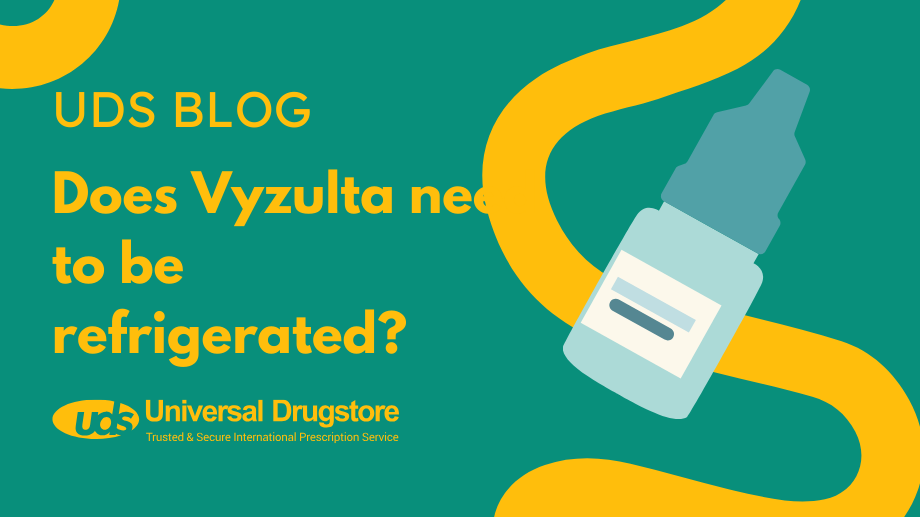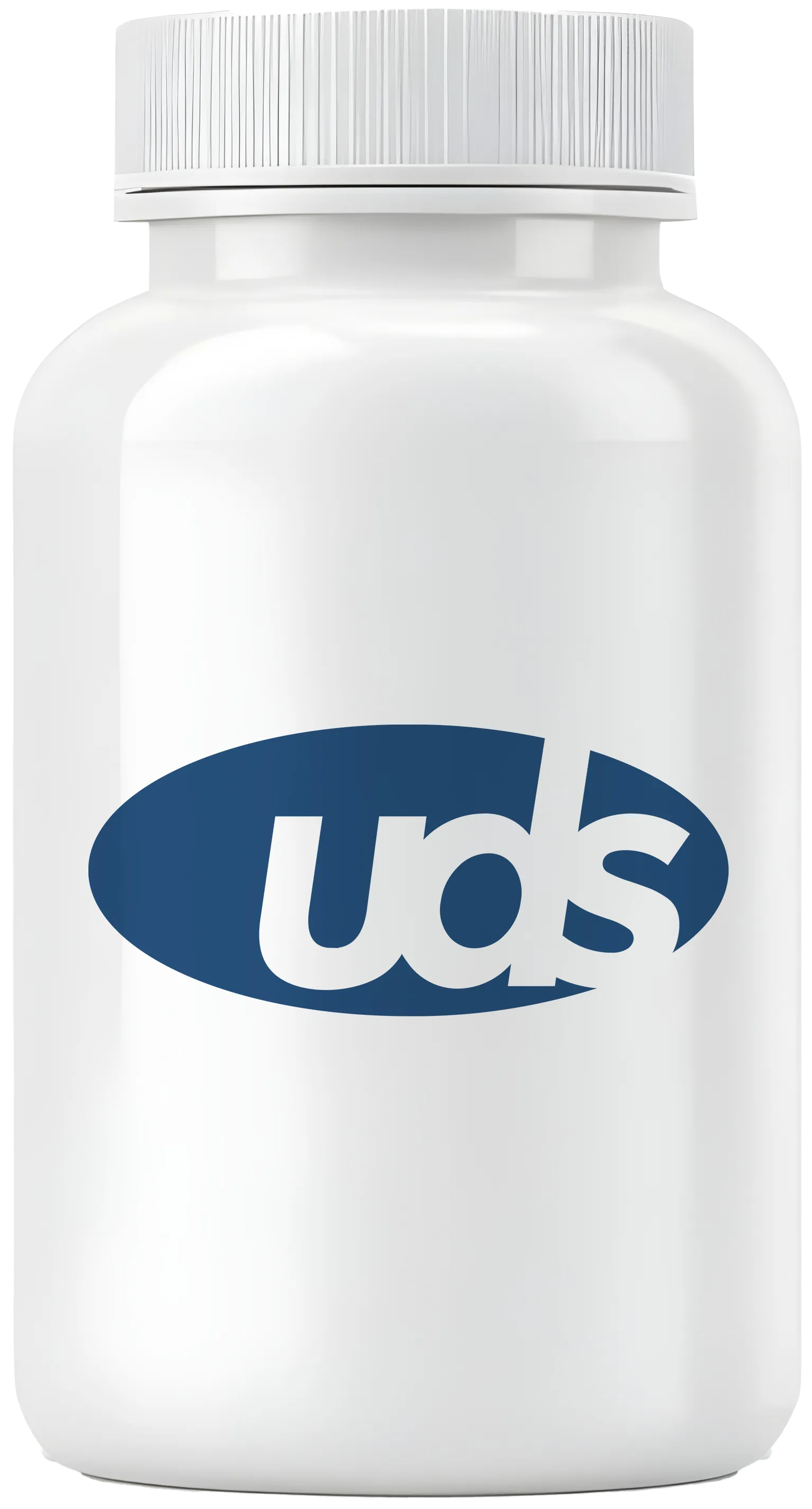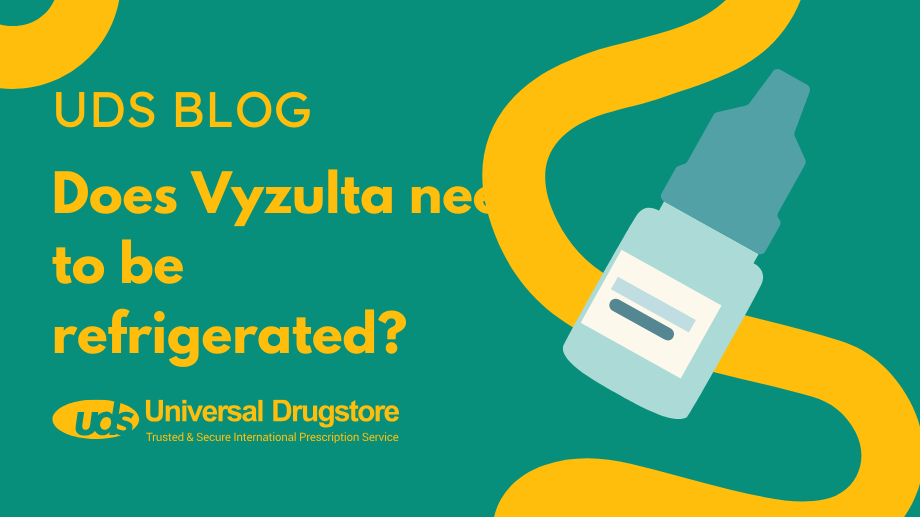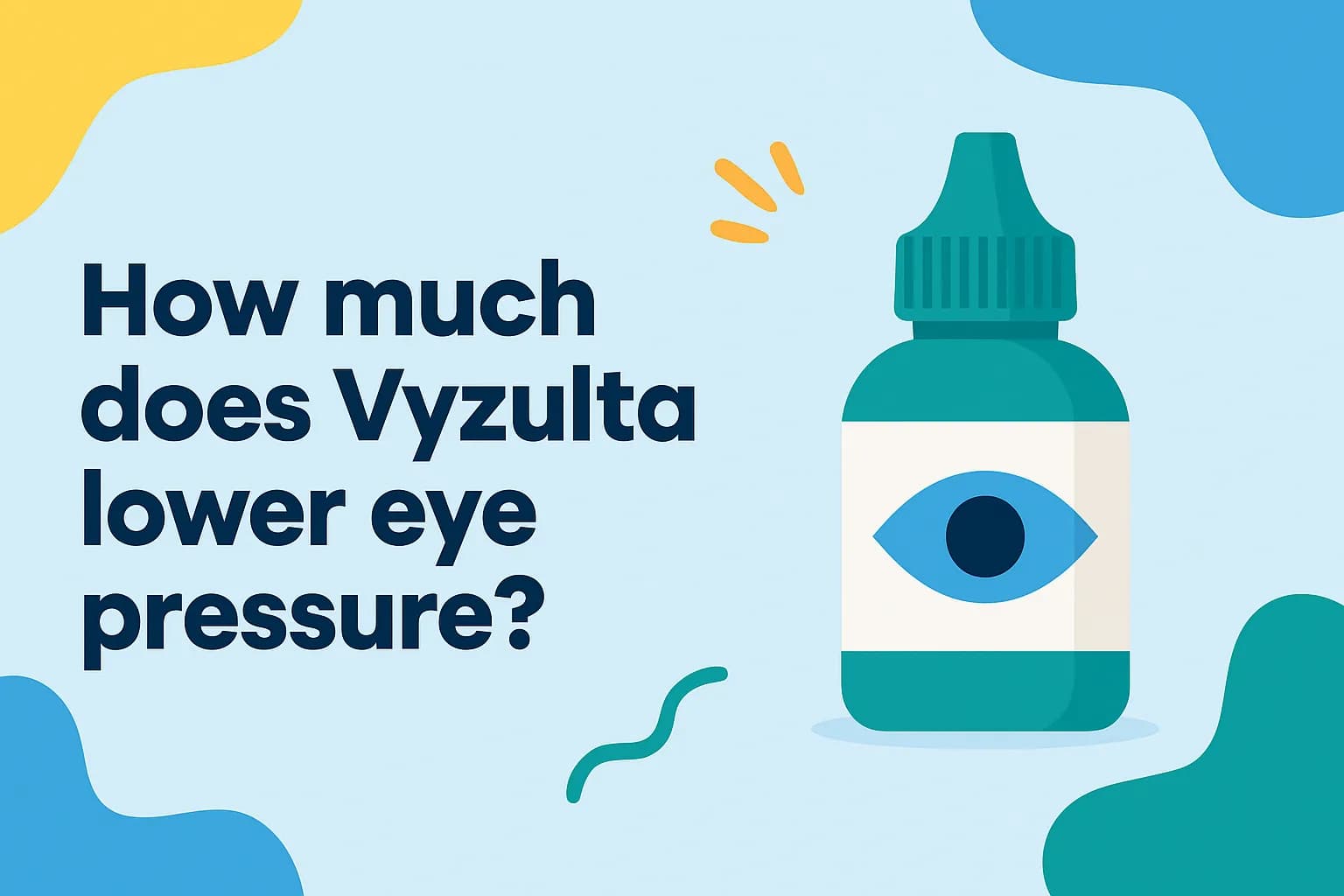Does Vyzulta need to be refrigerated?

Vyzulta (latanoprostene bunod ophthalmic solution) is a brand-name eye medication that is used to treat open-angle glaucoma and ocular hypertension.
Storage of medications such as Vyzulta is important to ensure they keep their potency and guarantee their quality and safety. During shipment, unopened bottles of Vyzulta may be kept at temperatures up to 104°F (40°C) for up to 14 days. Once it has been dispensed, you should keep any unopened bottles of Vyzulta in your refrigerator between 36°F to 46°F (2°C to 8°C). Protect from freezing and light. Once you open the bottle, it may be stored in the refrigerator or at room temperature for up to 8 weeks, as long as it is kept between 36°F to 77°F (2°C to 25°C). Discard any opened, unused bottles after 8 weeks or the expiration date, whichever comes first.
Read on to learn important information about Vyzulta while we answer some other frequently asked questions.
Vyzulta FAQs
What is Vyzulta used for?
Vyzulta (latanoprostene bunod) is a topical ophthalmic solution manufactured by Bausch & Lomb that is typically dosed as 1 drop in the affected eye(s) at night. It is a nitric oxide-donating prostaglandin analog that is FDA-approved for the reduction of intraocular pressure (IOP) in patients with primary open-angle glaucoma or ocular hypertension. Vyzulta is not recommended for children ages 16 and younger due to the potential for long-term effects.
How does Vyzulta work?
Vyzulta works to reduce intraocular pressure (IOP) by increasing the drainage of aqueous humor (fluid in your eye) from your eye through two pathways. Reducing fluid from your eye lowers your eye pressure which will help decrease your risk of vision loss from glaucoma.
What are the side effects of Vyzulta?
The most common side effects of Vyzulta in clinical trials include:
- Hyperemia (signs of blood in the lining of your eye)
- Eye irritation
- Eye pain
Some other possible side effects of Vyzulta include:
- Itchy eyes
- Blurred vision
- Feeling like there’s something in your eye
- Darker pigmentation of the iris (colored part of your eye) and eyelid
- Increase in length, thickness, or number of eyelashes
- Cornea inflammation (swelling and redness)
Vyzulta may also cause more serious side effects including:
- Serious allergic reactions, including:
- Hives
- Swelling of your throat and tongue
- Trouble breathing
- Eye inflammation and swelling
Vyzulta may cause swelling and redness in your eye. It can also cause macular edema or swelling of the macula (a part of the eye that is important for clear vision). You are more likely to experience this if you already have eye inflammation or if the lens of your eye is missing or damaged. Notify your healthcare provider right away if you notice eye discomfort or vision changes while using Vyzulta.
Bacterial infections
Eye drop bottles such as Vyzulta can cause eye infections (keratitis). These bacterial infections are more likely to occur if your bottle of Vyzulta gets contaminated. It is important to wash your hands before each use of your eye drop and to not touch the dropper tip with your hands, eyes, or any other surface. Let your healthcare provider know if you develop signs of an eye infection such as eye pain, vision changes, sensitivity to light, or eye discharge.
These are not all of the possible adverse events of Vyzulta. You should always seek medical advice from your ophthalmologist or other healthcare professional for any questions or concerns about your medical condition or treatment. You should also read all the patient information, including your Medication Guide that comes with Vyzulta. You can report side effects to the FDA at 1-800-FDA-1088 or www.fda.gov/medwatch.
Shop Medications
What precautions should be taken when using Vyzulta?
You should not use Vyzulta if you are allergic to latanoprost acid, butanediol mononitrate, or any of the inactive ingredients in this product. You should be sure your healthcare provider is aware of all your medical conditions as they may be contraindications or you may need increased monitoring during treatment, including if you:
- Wear contact lenses. Because this medication contains the preservative benzalkonium chloride, contact lenses should be removed before using Vyzulta and may be reinserted 15 minutes after administering it.
- Have a history of eye inflammation (iritis/uveitis).
- Have a history of macular edema or have risk factors for macular edema.
- Are pregnant or plan on becoming pregnant. It is not known what effects Vyzulta may have on your unborn baby.
- Are breastfeeding or plan on breastfeeding. It is not known if Vyzulta is found in breast milk or what effects it may have on your breastfed infant or the effects on milk production.
Does Vyzulta interact with other drugs you are taking?
When Vyzulta is taken with other prescription drugs, over-the-counter medications, vitamins, herbal products, and supplements, it may change how they work or increase the risk of side effects. Currently, there are no significant drug interactions listed for Vyzulta. However, be sure to tell your healthcare provider about all your current medications so they determine if they are safe to use together.
How do you use Vyzulta?
Vyzulta should be used once daily at night. If you wear soft contact lenses, remove them before using Vyzulta. The eye drops contain benzalkonium chloride, a preservative that can be absorbed and damage your contacts. You can put your contacts back in 15 minutes after using the eye drops. If you are using other eye drops along with Vyzulta, wait 5 minutes between using each type of eye drop.
Wash your hands before using Vyzulta. Do not touch the dropper tip with your eye, hands, or any other surface. This will avoid contaminating the solution and help avoid eye infections. Tilt your head back and gently pull down your lower eyelid to form a pocket. Place one drop into the pocket of the eye(s) being treated. Then close your eye and lightly press one finger to the inner part of your eye by your nose for 30 seconds. This helps make sure your eye absorbs the drop.
How much does Vyzulta cost?
How much you will pay for Vyzulta will depend on your insurance coverage and whether they cover this medication. If you have to pay full price for this medication, you can expect to pay over $300 for a 5 ml bottle of Vyzulta. At Universal Drugstore (UDS), you can get that same 5 ml bottle delivered to your door for around $70 with a valid prescription.
Should Vyzulta be stored in the refrigerator before opening?
Yes, unopened bottles of Vyzulta should be stored in the refrigerator between 36°F to 46°F (2°C to 8°C). Do not freeze Vyzulta and protect it from light.
How long can Vyzulta be at room temperature?
You should keep any unopened bottles of Vyzulta you have in the refrigerator between 36°F to 46°F (2°C to 8°C). Once opened, it may be stored in the refrigerator or at room temperature between 36°F to 77°F (2°C to 25°C) for up to 8 weeks. Discard any opened, unused bottles after 8 weeks or the expiration date, whichever comes first.
Keep your eye drop bottle away from light and do not store it in the freezer. As with all medications, keep Vyzulta out of the reach of children.
How effective is Vyzulta at lowering eye pressure?
Vyzulta has been shown to be well-tolerated and effective through multiple clinical trials. Patients using Vyzulta saw an average drop in their intraocular pressure (IOP) of 7.5 mmHg to 9.1 mmHg from their starting IOP over 3 months. More than 40% of these participants had a 40% reduction in their IOP after 3 months in some studies. The results of several clinical trials suggest that Vyzulta is more effective at lowering eye pressure than timolol and Xalatan (latanoprost).
Related Medications
- Rhopressa (netarsudil)
- Xalatan (latanoprost)
- Alphagan P (brimonidine)
- Combigan (brimonidine/timolol)
- Azarga (brinzolamide/timolol)
- Xalacom (latanoprost/timolol)
- Ganfort (bimatoprost/timolol)
Sources
- Medscape
- DailyMed
- Vyzulta Prescribing Information
- PDR
- Hoy SM. Latanoprostene Bunod Ophthalmic Solution 0.024%: A Review in Open-Angle Glaucoma and Ocular Hypertension. Drugs. 2018 May;78(7):773-780. doi: 10.1007/s40265-018-0914-6. Erratum in: Drugs. 2018 Jun;78(8):857. PMID: 29761382; PMCID: PMC5976683. Accessed 2/20/24.





